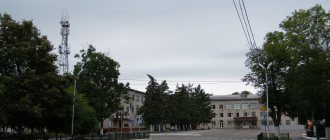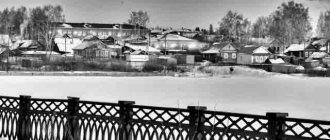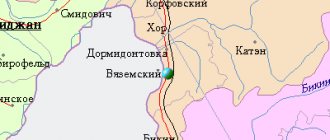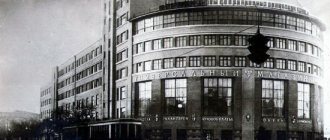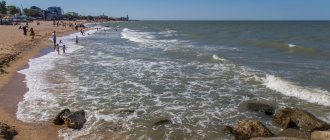| City Mamadysh Mamadysh Coat of arms |
| A country | Russia, Russia |
| Subject of the federation | TatarstanTatarstan |
| Municipal district | Mamadyshsky |
| urban settlement | Mamadysh city |
| Coordinates | 55°42′00″ n. w. 51°24′00″ E. d. / 55.70000° n. w. 51.40000° E. d. / 55.70000; 51.40000 (G) [www.openstreetmap.org/?mlat=55.70000&mlon=51.40000&zoom=12 (O)] (Z)Coordinates: 55°42′00″ N. w. 51°24′00″ E. d. / 55.70000° n. w. 51.40000° E. d. / 55.70000; 51.40000 (G) [www.openstreetmap.org/?mlat=55.70000&mlon=51.40000&zoom=12 (O)] (I) |
| Chapter | Ivanov Anatoly Petrovich |
| Based | in 1391 |
| City with | 1781 |
| Center height | 60 |
| Population | ↗15,573[1] people (2016) |
| Names of residents | mamadyshtsy, mamadyshtsy |
| Timezone | UTC+3 |
| Telephone code | +7 85563 |
| Postcode | 422190, 422191, 422192 |
| Vehicle code | 16, 116 |
| OKATO code | [classif.spb.ru/classificators/view/okt.php?st=A&kr=1&kod=92238501000 92 238 501 000] |
Show/hide cards
| Mamadysh Moscow |
| Kazan Mamadysh |
Audio, photo and video
on Wikimedia Commons
K:Settlements founded in 1391
Mamadysh
(Tat. Mamadysh) is a city (since 1781) in Russia, the administrative center of the Mamadysh district of Tatarstan.
Story
An ancient Bulgar settlement in the vicinity of Mamadysh appeared at the beginning of the 12th century. It is mentioned as “Ak Kirmen”, “White Kirmeni”, which in an adequate translation into Russian is “White Fortress” in 1151 in the annals of Kievan Rus... It is well known that the fortified settlement of Kermenchuk in the XII-XIV centuries was the center of the appanage principality of the Volga- Kama Bulgaria, completely independent. And until recently, the remains of its walls were located 18 kilometers from modern Mamadysh, not far from the village of Russian Kirmeni.
After the capture of Kazan by Ivan the Terrible in 1552 and with the inclusion of the Mamadysh lands into the Russian state, from the second half of the 16th century, Russian settlements began to emerge in the lower reaches of the Vyatka and Kama rivers. Since the end of the 16th century, the word “Mamadysh” appears in written sources.
On July 3, 1613, an official document was signed “On the formation of the monastic village of Trinity-Mamadysh on the site of the old Mamadysh wasteland,” which was part of the Kazan voivodeship, and then became part of the Kazan province as the center of the Mamadysh district. Soon, “on July 10, 1617, Archimandrite Cornelius of the Zainsky Monastery was allowed to build a fortress in the village of Mamadysh, on the Nokrat River, to protect against Nogai raids.”
Gastronomic shopping
First of all, Mamadysh, as a river region, is famous for its fish. In a tiny store at a local fish factory - you can find everything. The Realnoe Vremya correspondent met for the first time in this magical place with a half-meter (!) dried sabrefish. And smoked catfish, and dried bream, and fresh pike perch, pike, burbot, carp, and semi-finished fish products... In general, here is a real paradise for a fish lover. Moreover, the salesperson in the store is accustomed to tourists’ questions and patiently explains which product and how best to use it.
The next point of the shopping program is a store at a local cheese factory. Mamadysh cheeses are not only varied and tasty, but also cost 20 percent less than in one of the capital’s popular retail chains. This is understandable: the logistics are very complicated; in two and a half hours of travel, the cost of a kilogram of cheese cannot help but add up to an extra hundred rubles.
And another “legendary” Mamadysh product is lemonade. Really tasty, just like in Soviet childhood, according to GOST standards.
Mamadysh cheeses are not only varied and tasty, they also cost 20 percent less than in one of the capital’s popular retail chains
Economy
Milk, cottage cheese, and other products are produced. There is also a hotel in the city.
The city has enterprises for the production of dairy products and meat products, and a brick factory.
There is an industrial park "Vyatka"[21], the residents of which are LLC "PC "Success" (Processing of agricultural products (vegetables, berries, honey), deep freezing, canning, packaging, storage), LLC "PC "MEGA AGROPROM CENTER" ( deep processing of meat, fish, canning, storage, packaging) and FAGRECO-Povolzhye LLC (production of agricultural plant protection products, ensuring the safety of feed and preparations for livestock).
History of Mamadysh and Mamadysh district
According to the population census in 1764 in the village of Troitsky, in Mamadysh there were only 139 households with a population of 545 people of both sexes. Here was the monastery courtyard, the wooden Nikolskaya Church, built in 1614, and a mill on the Oshma River. Since 1764, Mamadysh has been an economic village and, accordingly, its inhabitants are state peasants. This transfer of residents from one category to another, of course, did not make their fate easier. The situation of the Muslim Tatars became even more difficult, who, unlike the Kryashen Tatars, in addition to paying increased taxes to the state/necks, were required to perform additional duties. Teak since 1718, when, according to the Decree of Peter the Great, the Admiralty was established in Kazan, for example, from every ninth household of the Muslim Tatars, one horse and one foot worker was taken to harvest ship timber, popularly nicknamed “lashmans” and included under this name in many sorrowful ballads and bytes of the Tatar people. This work was hellish, many died from cold, hunger, disease... Russians and baptized Orthodox Tatars were not assigned to ship work. In the Mamadysh region, from the middle of the 18th century, traces of class stratification were clearly visible, which occurred both among the Tatars and among the Russians, Mari, Chuvash, Udmurts... But the February and then the October revolutions broke out. In the district city, as elsewhere in Russia, political struggle was in full swing. In the history of Mamadysh of those times, the representative of the Provisional Government, the right-wing Socialist Revolutionary A.D. Bilkzhovich, left a noticeable mark; Bolshevik, pro-gymnasium teacher V.V. Abramov; Chairman of the district Council of Peasants' Deputies, left Socialist Revolutionary I. R. Stepanov and others. The day of December 12, 1917 went down in the history of Mamadysh as the day of the establishment of Soviet power. Alexander Vasilyevich Davydov was elected the first chairman of the Bolshevik Council of Workers', Soldiers' and Peasants' Deputies. On the same day, the city government and the district zemstvo dispersed. However, no one was going to peacefully transfer power into the hands of the Bolsheviks. In the summer of 1918, civil war broke out. In May 1918, there were 110 people (company) among the Red Army volunteers in the district. At the same time, a district military registration and enlistment office was formed headed by A.V. Davydov. Trofim Gavrilovich Dazhin (later the chairman of the Naberezhnye Chelny city executive committee, and then a professor), Stepan Vasilyevich Domolazov (later a red general, division commander), Shamsi Sharafutdinovich Khisamutdinov and others actively worked as part of the military commissariat. But some of the Mamadyshites were on the side of the White Guard, in particular in the detachment of Staff Captain Leonid Shcherbakov, the son of the owner of a local distillery, who fought here. In the summer of 1918, the White Czechs and White Guards captured the city and carried out punitive actions, the victims of which were buried in a mass grave on Mount Puzanka (Mountain of Heroes). Next to the obelisk erected by those who died at the hands of the White Czechs, there is another obelisk - to those who died during the liberation of the city from the White Guards and White Czechs in the September days of 1918 by the soldiers of the 28th Azin Division. Peaceful construction began. But it did not last long - the civil war again dragged the Mamadysh region into its inferno. In mid-1919, Kolchak’s army captured the territory of modern Tatarstan, and Mamadyshsky district was declared front-line, and the front line ran along the Vyatka River. Here the Revolutionary Committee is created, to which all power is transferred and the general mobilization of those liable for military service into the Red Army is carried out. At the same time, despite the muddy roads, the peasants of the county presented about 10 thousand carts to the front for the evacuation of institutions, cars, cargo, and precious property. The Ukom of the RCP (b) issued a resolution to mobilize 70 percent of its communists to the front. So, in a short time, a detachment of 600 bayonets was formed from communists and volunteers by former non-commissioned officer S.V. Domolazov, which received the name “Mamadysh Communist Battalion”. Domolazov himself became the battalion commander, and Timofey Ivanovich Artemyev became the commissar. Then this battalion grew into the 39th regiment of the Azin division, which was skillfully commanded by the same Domolazov Stepan Vasilyevich - a hero of the civil war, one of those few who were awarded three Orders of the Red Banner of Battle for military merits. Until May 24, 1919, the front line for a long time ran along the Vyatka River - from Sokoliye Gory to Vyatskiye Polyany. The strip from Sokolki to Mamadysh was held by Azin’s division: the 39th regiment held the defense near the village of Grokhan, and the regiment of nineteen-year-old V.I. Chuikov (future commander, Marshal of the Soviet Union) was located in the city of Mamadysh. The headquarters of the 3rd brigade, brigade commander Gonikhin, was also located here. Divisional commander Azin and divisional commissar Pylaev often visited the brigade headquarters. In revenge for the events of the civil war, many streets in the city are named after the heroes of those days - Davydov, Azin, Domolazov, Chapaev, Krasnoarmeyskaya and others. The May offensive of 1919 was crowned with success by the Red Army and military skirmishes were never heard again on the streets of Mamadysh. Peaceful life began in the district.
In 1922, the county was renamed a canton, and in 1930 it began to be called a district, but with changed borders. The Mamadysh residents, as always, actively participate in the life of the country: this is eloquently evidenced by the fact that more than 13 thousand people fought on the fronts of the Great Patriotic War, of which every fourth died a heroic death. Gafiyat Nigmatullin, Ivan Maksimov, Mikhail Moskvin, Mikhail Prosvirnin, Pyotr Vorobyov were awarded the title of Hero of the Soviet Union. Five people - Kh. Valeev, V. Voznesensky, A. Kadyrov, M. Zainullin, M. Ignatiev were awarded the Order of Alexander Nevsky, and M. Khristoforov - the Order of Kutuzov. Unfortunately, many prominent people of the Mamadysh region were repressed in the 1930-50s, among them S.V. Domolazov, and A.V. Domolazov, and M.Kh. Budaili and others. By the way, on August 30, 1993, a monument was unveiled to the writer and journalist Mahmut Budaili in his native village of Shadchi. Mamadysh of the war years was deep in the rear. Entire institutions and industrial enterprises of other cities were evacuated here. So, in Mamadysh there was an orphanage near Moscow and a cotton factory, in Sokolki and Takanysh - Leningrad secondary schools. By the spring of 1944, the Mamadysh cotton factory began producing products for the front. The oldest enterprise in Mamadysh, the distillery, also worked for the front. The staff of this plant were the first in the region to take up the words of almost Gorky residents: “Work for yourself and your comrade who has gone to the front!” The villages also worked under the same motto during the war. In December 1941, courses for tractor drivers were created in Mamadysh, and by the spring of next year they had already trained more than 80 girls. On state farms and at MTS, women's brigades are formed. And yet, the workers of the region participated with great enthusiasm in all forms of the national movement to help the front - in creating a defense fund, collecting funds for armaments of the Red Army, and subscribing for a war loan. They collected warm clothes for those in the trenches and sent them parcels, often taking away from their meager table. Thus, by March 1942, workers of the Mamadysh rear contributed more than 263 thousand rubles to the Motherland Defense Fund, purchased government loan bonds for more than 167 thousand and a cash and clothing lottery for 270 thousand rubles. Gifts were sent to the fighters every holiday. The workers of the region collected over 3 million rubles for the construction of the “Collective Farmer of Tatarstan” tank column. Thus, residents of Verkhneyakinsk, Kuyukeryksinsky and Malmyzh village councils contributed 100 thousand rubles to this fund. Sabir Salimov, Mubaraksha Mukhamedshin, Shakur Ganeev from the villages of Khasanshina and Verkhnyaya Yaki transferred 5 thousand rubles each to the fund for the construction of a tank column. All three received personal telegrams of gratitude from Supreme Commander-in-Chief Stalin. In the same terrible year of 1943, at the expense of the workers of the region, airplanes were built for the aviation unit “Mamadyshsky Kolkhoznik”. And again from I.V. Stalin received a telegram: “Please convey to the workers of the Mamadysh district, who collected 2 million (actually 2,228 thousand rubles were collected - Author) for the construction of the Mamadysh Collective Farmer combat aircraft, my fraternal greetings and gratitude to the Red Army.” Aircraft for the Mamadyshsky Kolkhoznik aviation unit were manufactured at the Kazan plant named after S.P. Gorbunov.
Educational institutions
- Mamadysh secondary school No. 1.
- Lyceum No. 2 named after academician K.A. Valiev of the city of Mamadysh.
- Secondary school No. 3 of the city of Mamadysh.
- Secondary school No. 4 in Mamadysh.
- Mamadysh Polytechnic College.
- Children's art school of the city of Mamadysh named after the composers Yarullins (see Yarullin, Zagidulla Yarullovich, Yarullin, Farid Zagidullovich and Yarullin, Mirsaid Zagidullovich).
- Republican specialized children's and youth sports school for wrestling.
- Children's and youth sports school "Olympus".
- Children's and youth sports school for ice hockey and figure skating.
Links
Moscow (0—16)¹
Moscow region: Reutov (16) | Balashikha (16-30) | Old Kupavna (36—37) | Obukhovo (42—44) | Noginsk (50-60)
Vladimir region: Pokrov (103) |
Cockerels (121) | Lakinsk (150) | Vladimir
(180—192) | Vyazniki (291) | Gorokhovets (330)Nizhny Novgorod region: Dzerzhinsk (384, 402) | Nizhny Novgorod
(414) | Kstovo (440) | Lyskovo (502)
Chuvashia: Cheboksary
(651) |
Kugesi
(660) | Tsivilsk (683)Tatarstan: Kazan
(820) | Yelabuga | Naberezhnye Chelny (1055) | Menzelinsk
Bashkortostan: Verkhneyarkeyevo
(1193) |
Durtyuli | Kushnarenkovo
|
Ufa
(1342)see further: M-5 "Ural"
¹ The number in brackets indicates the distance from the center of Moscow in kilometers: to the Nizhny Novgorod region - according to topographic maps, then - according to a GPS map.
Excerpt characterizing Mamadysh
“Vous ne me prenez pas en taken aback, vous savez,” he said. – Comme veritable ami j'ai pense et repense a votre affaire. Voyez vous. Si vous epousez le prince (it was a young man), - he bent his finger, - vous perdez pour toujours la chance d'epouser l'autre, et puis vous mecontentez la Cour. (Comme vous savez, il ya une espece de parente.) Mais si vous epousez le vieux comte, vous faites le bonheur de ses derniers jours, et puis comme veuve du grand... le prince ne fait plus de mesalliance en vous epousant, [You Don't take me by surprise, you know. Like a true friend, I have been thinking about your case for a long time. You see: if you marry a prince, then you will forever lose the opportunity to be the wife of another, and in addition, the court will be dissatisfied. (You know, after all, kinship is involved here.) And if you marry the old count, then you will be the happiness of his last days, and then... it will no longer be humiliating for the prince to marry the widow of a nobleman.] - and Bilibin let go of his skin. – Voila un veritable ami! - said the beaming Helen, once again touching Bilibip’s sleeve with her hand. – Mais c'est que j'aime l'un et l'autre, je ne voudrais pas leur faire de chagrin. Je donnerais ma vie pour leur bonheur a tous deux, [Here is a true friend! But I love both of them and I wouldn’t want to upset anyone. For the happiness of both, I would be ready to sacrifice my life.] - she said. Bilibin shrugged his shoulders, expressing that even he could no longer help such grief. “Une maitresse femme! Voila ce qui s'appelle poser carrement la question. Elle voudrait epouser tous les trois a la fois,” [“Well done woman! This is what is called firmly asking the question. She would like to be the wife of all three at the same time.”] thought Bilibin. - But tell me, how will your husband look at this matter? - he said, due to the strength of his reputation, not afraid to undermine himself with such a naive question. – Will he agree? - Ah! Il m'aime tant! - said Helen, who for some reason thought that Pierre loved her too. – Il fera tout pour moi. [Oh! he loves me so much! He is ready for anything for me.] Bilibin picked up the skin to indicate the preparing mot. “Meme le divorce, [Even for a divorce.],” he said. Helen laughed. Among the people who allowed themselves to doubt the legality of the marriage being undertaken was Helen’s mother, Princess Kuragina. She was constantly tormented by envy of her daughter, and now, when the object of envy was closest to the princess’s heart, she could not come to terms with this thought. She consulted with a Russian priest about the extent to which divorce and marriage was possible while her husband was alive, and the priest told her that this was impossible, and, to her joy, pointed her to the Gospel text, which (it seemed to the priest) directly rejected the possibility of marriage from a living husband. Armed with these arguments, which seemed irrefutable to her, the princess went to see her daughter early in the morning, in order to find her alone. After listening to her mother's objections, Helen smiled meekly and mockingly. “But it’s directly said: whoever marries a divorced wife...” said the old princess. - Ah, maman, ne dites pas de betises. Vous ne comprenez rien. Dans ma position j'ai des devoirs, [Oh, mamma, don't talk nonsense. You don't understand anything. My position has responsibilities.] - Helen spoke, translating the conversation into French from Russian, in which she always seemed to have some kind of ambiguity in her case. - But, my friend... - Ah, maman, comment est ce que vous ne comprenez pas que le Saint Pere, qui a le droit de donner des dispenses... [Ah, mamma, how do you not understand that the Holy Father, who has the power of absolution ...] At this time, the lady companion who lived with Helen came in to report to her that His Highness was in the hall and wanted to see her. - Non, dites lui que je ne veux pas le voir, que je suis furieuse contre lui, parce qu'il m'a manque parole. [No, tell him that I don’t want to see him, that I’m furious against him because he didn’t keep his word to me.] “Comtesse a tout peche misericorde, [Countess, mercy for every sin.],” said the young blond man as he entered. a man with a long face and nose. The old princess stood up respectfully and sat down. The young man who entered did not pay attention to her. The princess nodded her head to her daughter and floated towards the door. “No, she’s right,” thought the old princess, all her convictions were destroyed before the appearance of His Highness. - She is right; but how is it that we didn’t know this in our irrevocable youth? And it was so simple,” the old princess thought as she got into the carriage. At the beginning of August, Helen's matter was completely determined, and she wrote a letter to her husband (who loved her very much, as she thought) in which she informed him of her intention to marry NN and that she had joined the one true religion and that she asks him to complete all the formalities necessary for divorce, which the bearer of this letter will convey to him. “Sur ce je prie Dieu, mon ami, de vous avoir sous sa sainte et puissante garde. Votre amie Helene.” [“Then I pray to God that you, my friend, will be under his holy, strong protection. Your friend Elena"]
What do Paris and Mamadysh have in common?
Few people in Tatarstan have not heard the saying “to Mamadysh through Paris” (or “to Paris through Mamadysh”). Judging by the meaning of the catchphrase, this is somehow very far away. And how far it is - you can clearly find out on the embankment of the Oshma River, where the mamadys, ironizing themselves with might and main, installed a nice weather vane showing the mileage to Paris. 3,784 kilometers - really, not close!
But the matter does not end with a weather vane. Walking along the embankment (by the way, very nice and well-maintained), you can see the restaurant building, stylized as a French castle. And in the center of the city, on top of a high hill, stands... the Eiffel Tower. Of course, it has nothing to do with Eiffel, but you can recognize the architectural allusion immediately and without thinking.
3,784 kilometers - really, not close!
The guides tell you what the tiny town in Tatarstan and the French capital have in common. The basic version, of course, is related to business. So, according to legend, a tradesman named Noskov was once sailing on a ship on his tradesman business. The steamer broke down right in Mamadysh, and the passengers were temporarily released ashore to take a walk. Noskov came out and was stunned: champignons were growing everywhere. And since the local population at that time was predominantly Tatar (and the Tatars did not eat mushrooms), no one collected them at all. And our hero has a plan. He came to Mamadysh and opened a small production of canning champignons. At the end of the 19th century, he even went to an exhibition in Paris with his canned goods and suddenly received a gold medal there. And while sitting in a Parisian restaurant, I decided to organize in Mamadysh... the production of canned frog legs. History, however, is silent about whether canned mother’s frogs were eaten in Paris.
